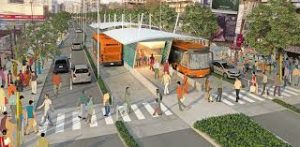Transit Oriented Development:

Delhi Development Authority’s (DDA’s) East Delhi hub is set to roll out India’ first transit-oriented development (TOD) project.
- It is an urban development strategy which aims to create the maximum possible numbers of houses, shops, offices and recreational spaces near public transport facilities.
- The TOD approach puts public transportation at the centre of the urban development plan.
- Objectives is to minimise use of personal vehicles, make commutes shorter, and reduce the cost of transport and exposure to pollutants.
- Neighbourhoods built around a TOD strategy are built around at least one major transit node such as a metro station or other rail systems.
- Transfers between different modes of transport, such as switching from a metro to a city bus, should be a seamless process.
- TOD hubs should also have open public spaces such as transit plazas and parks to increase street activity and foster a sense of community.
- These localities must also be friendly to pedestrians and cyclists, since one of the major thrusts of this approach is to take vehicles off the road.
- TOD localities should be mixed-use, so that people can live, work, and relax within a small radius.
- Advantages of Transit Oriented Development:
- To transportation agencies, it offers an additional source of non-ticket revenue.
- For land-owning agencies and governments it appears as a mode of value-capture financing, which allows them to fund public projects through potential increases in land values resulting from these projects.




